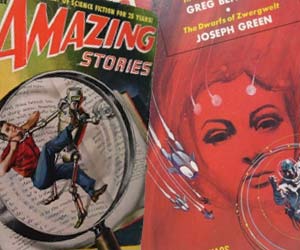Dianetics - Questions
Dianetics - Questions
Blog Article
Little Known Questions About Dianetics.
Table of ContentsIndicators on Dianetics You Should KnowNot known Facts About DianeticsThe Dianetics IdeasDianetics for Beginners
As a child, according to his aunties, Ron Hubbard was already had of a fecund creative imagination, comprising games and tales for the enjoyment of the invariably conscientious grownups in his world. From the get go, he had a capacity for dream which he was to carry with him throughout his life.Although he developed the large and complex world of Scientology, in which his fans might shed themselves for many years, he did not desire to be determined with his marks. By the very early thirties, Hubbard obtained a spouse and 2 children (Dianetics). To the scary of his conservative moms and dads, he failed out of university and had no acceptable skills with which to sustain his young family

What Does Dianetics Mean?
He was an extremely fast writer, and would work all evening to produce story after story, retiring at dawn to rest till very early mid-day. Nonetheless, despite exactly how prolific his outcome, he might never seem to make adequate money to support his profligate investing practices. By the mid-forties, his literary outcome was starting to decline.
He quickly understood the limitations of his job, that he was not going to attain power and money by composing penny-a-word pulp experiences. The method to make cash, he started to mention to his buddies, is to begin a religion. He when resolved a group of sci-fi authors in New Jersey with the words, "Creating for a dime a word is ludicrous.
Reports claimed he was functioning on something brand-new, a publication on psychology. In January of 1950, a mysterious advertisement showed up in Astounding Sci-fi, a pulp magazine modified by his pal, John Campbell, encouraging: ... a write-up on the scientific research of the mind, of human idea. It is a completely new scientific research, called Dianetics, and it does exactly what a science of idea should do.

4 Simple Techniques For Dianetics
It is an exploration right into terra incognito, the human link mind, that huge and hitherto unknown world half an inch back of our foreheads. You are beginning a journey. Treat it as an experience. And might you never ever coincide again. ( 3 ) Early in guide, Hubbard introduced what he called the "clear." Dianetically, the maximum person is called the "clear." One will certainly hear much of that word, both as a noun and a verb, in this volume, so it is well to hang around below initially setting forth exactly what can be called a clear, the goal of Dianetic treatment.
These examinations verify the clear to be completely without such sickness or aberrations. ( 4 ) The state of Clear, Hubbard promised, was a mindset never ever before accomplished by guy. Upon achieving Clear, a person would certainly advance from the state of Homo Sapiens to the new and advanced state of "Homo Novis." Dianetic therapy, called "auditing" (to pay attention), turned out to be an amalgam of Freudian analysis, in which a lying patient is motivated to remember previous terrible experiences; abreactive therapy, in which previous occasions are reexperienced by the client with their coming with feeling; General Semantics of Korzybski, in which a person finds out to differentiate in between subconscious experiences; and the psychoanalytic theory of Nandor Fodor, in which the influence of prenatal experiences is explored.
According to Hubbard, all the occasions of our lives are saved in the mind as "mental photo pictures," or memories. They are saved, or "filed," in "chains" by similar content. So an individual could have a "frustration chain," or a "pain in the best ankle chain," and so on. By guiding the individual, called the "preclear" in Dianetics (one that is not yet "Clear"), to remember and reexperience the stressful memories on each chain, the potential of the "somatic" of that chain get redirected here to "key-in" or become restimulated in the present can be removed.
The total data of all the memories of a private going back in time is called the "time track (Dianetics)." Hubbard asserted that when an individual was investigated to the point that all his subconscious, "reactive" memories were refiled in the "logical" memory banks, then he would achieve the state of Clear and would never once More hints more suffer the impacts of his reactive mind
All About Dianetics

By the end of the year, over 150,000 duplicates of the Dianetics publication had been marketed. In a beautiful post in the New York Times, a reviewer mentioned substantially that "background has come to be a race between Dianetics and disaster," ( 5 ) resembling an idea usually mentioned by Hubbard. By August, there were more than 100 students enlisted for the one month Dianetic auditing training course instructed at the Structure by Hubbard.
Report this page